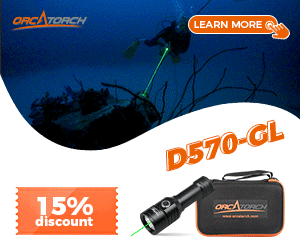OP
Scott A McWilliam
Contributor
I am still thinking about this thread and the way things played out with Parks Canada and the Erebus and Terror. One of the things that are interesting to me is if we were given the job of finding the two shipwreck sites today, I do not think we would be going about it the same way. New technology is coming online that has the potential to revolutionize the way shipwrecks are found. While this is not particularly part of the Erebus and Terror thread it clearly has applications to other sites so I thought I would mention it.
The passage of time and technological advancement has made me into a world-class hypocrite, again. Fieldwork has always been the part of archaeology I enjoy and the opposite of this is often armchair archaeology. Now I think a good armchair and a large external hard drive are the new cutting edge in shipwreck hunting equipment.
LIDAR files are very large files and it is necessary to apply a variety of filters to the data to render the image you want. LIDAR stands for Light Detection and Ranging. It is usually done from an aircraft and works on the same general principals as radar but it uses pulsed laser light.
This is a link to a NOAA page that will give you an overview of how it works:
https://oceanservice.noaa.gov/facts/lidar.html
LIDAR data is free in many parts of Canada. Most of Southern Ontario is available for free online. On the NOAA page the use of bathymetric LIDAR is mentioned. Most LIDAR data has been collected has been done with green laser light. The technology is improving and blue laser light is now being used. It is possible to see down two hundred feet into the water column.
While I am sure many technical divers look forward to continued improvements to allow new finds with at a respectable technical diving depth, this will revolutionize maritime archaeology. In the US you can often buy LIDAR if you can not find a free site. In the future, you will be able to hunt for shipwrecks on your laptop.
The passage of time and technological advancement has made me into a world-class hypocrite, again. Fieldwork has always been the part of archaeology I enjoy and the opposite of this is often armchair archaeology. Now I think a good armchair and a large external hard drive are the new cutting edge in shipwreck hunting equipment.
LIDAR files are very large files and it is necessary to apply a variety of filters to the data to render the image you want. LIDAR stands for Light Detection and Ranging. It is usually done from an aircraft and works on the same general principals as radar but it uses pulsed laser light.
This is a link to a NOAA page that will give you an overview of how it works:
https://oceanservice.noaa.gov/facts/lidar.html
LIDAR data is free in many parts of Canada. Most of Southern Ontario is available for free online. On the NOAA page the use of bathymetric LIDAR is mentioned. Most LIDAR data has been collected has been done with green laser light. The technology is improving and blue laser light is now being used. It is possible to see down two hundred feet into the water column.
While I am sure many technical divers look forward to continued improvements to allow new finds with at a respectable technical diving depth, this will revolutionize maritime archaeology. In the US you can often buy LIDAR if you can not find a free site. In the future, you will be able to hunt for shipwrecks on your laptop.



